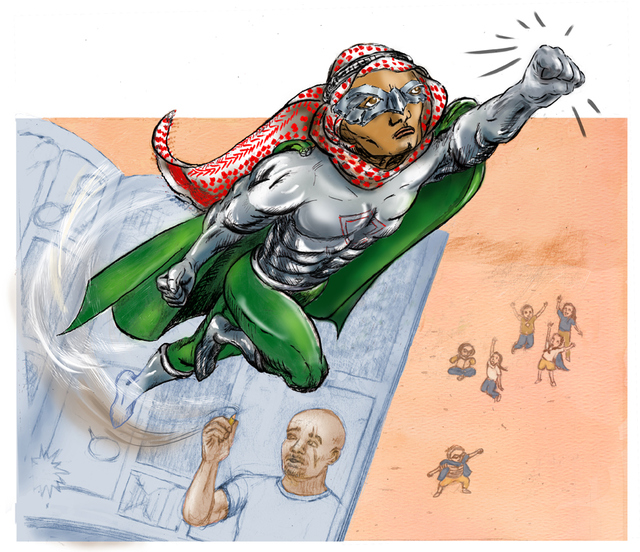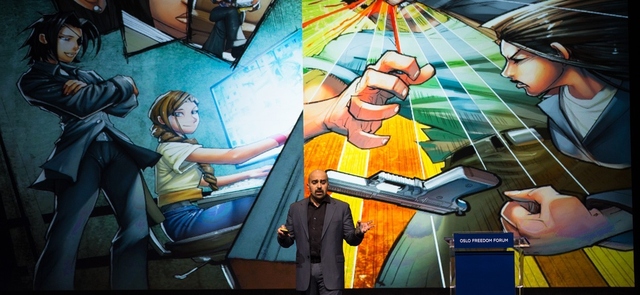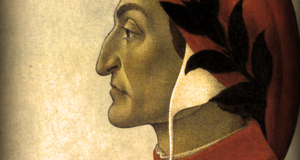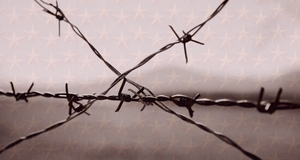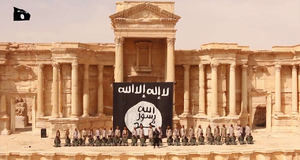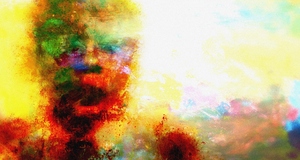EssaysArtistic Expression for Political Change: Comedy as Counter-Terrorist Action
By
2016, Vol. 8 No. 12 | pg. 1/1
KEYWORDS:
In 1931, Kenneth Burke challenged the idea that literature and art were merely ornamental. “All of the verbal arts,” he explained, “including literature, drama, speech, pedagogy, and reportage, affect both social knowledge and political decision-making” (Hart & Payne, 1997, p. 261). To Burke and millions of others, art, writing, speech, and theater are far more than entertainment for entertainment’s sake. These forms of expression have the potential to create significant social and political change. This remains a quite salient point in 2016. In March of 2015, National Public Radio published an online news story called “Egyptians Fight ISIS Fear-Mongering With Punchlines And Parody.” Author of the piece, Leila Fadel explains in the story that some individuals and organizations use comedy as a tool of subversion, as a means of defusing jihad and other terrorist acts (2015). Making themselves and others laugh serves to counter ISIS or ISIL, the violent extremist group famous for using weapons such as “highly-produced videos of brute violence” including recordings of a man being burned alive in a cage, Christians being beheaded on a Libyan beach, and a child being used to execute a suspected traitor (Fadel, 2015). Some individuals and organizations use comedy as a tool of subversion, as a means of defusing jihad and other terrorist acts. Burke adopted the dramatistic model for criticism by seizing “on features of drama that had long been recognized but [had been] inadequately developed as a critical paradigm” (Hart & Payne, 1997, p. 263). At the core of dramatic action is what Burke terms motive, why people do what they do. All drama taps into human motives by asking audience members to “examine – and judge – how people behave” (Hart & Payne, 1997, p. 263). In this essay I draw on Burke’s principles of dramatism to explain the symbolic power of comedy-oriented counter-terrorist action. To Burke, life is drama, and “people’s actions are themselves symbolic statements” (Hart & Payne, 1997, p. 261).In this essay I discuss two examples of artistic counter-terrorist action as symbolic statements. One is by a Jordanian comic book author and entrepreneur, Suleiman Bakhit, son of a Jordanian politician who went on to serve two times as prime minister. The other is by a newlywed couple of young doctors, Ahmed Shehata and Shaimaa Daif, who live in Egypt. I focus on three of the six assumptions upon which Burke’s critical system depends: the first, that the range of rhetoric is wide, second, that all life is drama, and fifth, that rhetoric promises transcendence. I exemplify how rhetoric such as that used in and through these comedic actions is used as what Burke calls “equipment for living” (Hart & Payne, 1997, p. 270). Through his field research, surveys of children in poor neighborhoods in and around the Jordanian capital of Amman and in Syrian refugee camps (New York Times, 2014), and examination of the influence of extremist ideology on Jordanian children, comic book author Suleiman Bakhit recognized the pervasiveness of extremist terrorist rhetoric in Jordan (KFOR-TV, Querry, & CNN Wire, 2015). In response to what he learned, Bakhit created a comic book series about contemporary military heroes who “are easy to embrace” and did this to change stereotypes and fight terror in the Middle East through art, without guns and war (KFOR-TV, Querry, & CNN Wire, 2015). Above: An illustration by Van M. Hong depicting Suleiman Bakhit at work bringing superheroes to life for Arab children. Below: Suleiman Bakhit speaking at the Oslo Freedom Forum in October, 2014. “The kids in the West,” Bakhit explains, “grow up on Spiderman, Batman, Frozen. In large parts of the Middle East, kids grow up on jihad ideology that is incredibly dangerous. That’s what all extremists want, one version of the narrative, their own narrative” (KFOR-TV, Querry, & CNN Wire, 2015). To Bakhit, this rhetoric is what Burke calls a “selection of reality” that functions as a “deflection of reality” (1966, p. 45). The pervasive rhetoric that Bakhit recognized was “dramatic action” that serves to veil the “choice-making that all politics involves” (Hart & Payne, 1997, p. 265). Bakhit reacted to it by choosing to tell a different story to the youth in the Middle East. He chose to use comedic art: ‘I want to provide the youth with an alternative hero journey, show them that a sense of purpose, sense of identity and adventure in life can be achieved by service to others by resilience by hope, not violence and hate.’ With some government funding 10 years ago, he says he was able to print over 1 million copies and reach children across Jordan.' Bakhit’s actions demonstrate symbolic power in that over one million copies of his comic were printed in 2005, a year when the Jordanian population was about 5.6 million, and 95 percent of whom were Sunni Muslim (Bureau of Democracy, Human Rights, & Labor, 2005). Ahmed Shehata and Shaimaa Daif’s actions as symbolic statements of counter-terrorism evidence the second assumption of Burke’s critical system: all life is drama. As Burke explains, whenever people congregate, there is drama, though “the essential drama of a situation is not revealed until rhetoric exploits it” (Hart & Payne, 1997, p. 265). In the example of Shehata and Daif’s wedding, the groom (Shehata) had the idea of defying ISIS by turning the object of people’s fear of ISIS – namely that of his (at the time) to-be wife (Daif) – into an object of humor. Since Daif was having nightmares after watching ISIS videos, Shehata and his friends executed a humorous plan. As Fadel (2015) describes, they burst into the wedding, masked and carrying knives, “ISIS’s anthem blast[ing] from the speakers,” and, as masked men, they “put a cage on the dance floor, lock[ed] the couple inside. As soon as they were behind bars the music switched to popular dance music and the couple start shaking their hips and jumping around.” Shehata’s efforts to cheer up his wife on their wedding day had symbolic power in that this comedy-oriented counter-terrorist act accomplished the opposite of what ISIS hoped it would. In the words of Fadel (2015), ISIS doesn’t want to be laughed at, “They want you to be afraid of them, to succumb to them.” Akin to how Burke calls Capote’s rhetoric in In Cold Blood as “return[ing] life to the victims who had died and humaniz[ing] the story of the inhuman beasts who had perpetrated the crime” (Hart & Payne, 1997, p. 265), Shehata and Daif’s wedding scene parody of ISIS exemplified a moment of resistance in that the rhetoric of ISIS/ISIL no longer had the power of exploiting what Burke would call “the essential drama of a situation.” Instead, this moment symbolically pointed to what is at stake and for whom, allowed people a unique outlet, and gave people in the Middle East and across the world (since the video quickly went viral) a way to affix words and expressive occasion to what was emotionally going on for them regarding ISIS/ISIL. This matters because, “without such labels, says Burke, people cannot describe what they feel, even to themselves” (Hart & Payne, 1997, p. 265), or make sense of, let alone determine how they want to respond to what they are feeling. Comedy, in this instance, served as a tool of subversion. It gave people a chance to reorient themselves toward ISIS in ways that no longer left them terrorized. ISIS was reframed as the subject of humor in these moments of communal celebration (at a wedding). Shehata and Daif’s wedding scene parody example conveys the message that the power that ISIS/ISIL’s propaganda videos were having (and continue to have) over people need no longer be interpreted by the world as compulsory, faceless, nameless, or esoteric as ISIS/ISIL desires. The aim of this parody was not to “make light of the tragic deaths at the hands of ISIS,” but to instead “tell ISIS that people aren’t afraid. ‘No one can take away our humor and our happiness,’ Daif says” (Fadel, 2015). This example illustrates that rhetoric promises transcendence, Burke’s critical system’s fifth assumption, for “transcendence argues that [people] can become better [and illustrates] why they should” (Hart & Payne, 1997, p. 269). Rhetoric has transcendent themes, Burke reminds us, “because people want to feel they are doing something important with their lives, that they are rising above the ordinary [and so] meeting these needs turns rhetoric into a kind of secular prayer” (Hart & Payne, 1997, p. 269). In Fadel (2015), Arab-American comedian Dean Obeidallah discusses how many people consider parodies, such as that of the wedding ISIS/ISIL comedic moment, brave because “people are mocking a group operating in their own backyard, and calling them out as an un-Islamic State. ‘It’s a way of actually dealing with it when something is so horrific; sometimes comedy is the only way you can actually process it,’ he says.” When people use words, as this example illustrates, they make symbolic statements, and verbal arts such as those oriented around humor have the potential to significantly influence social knowledge, political decision-making, and collective action. As Burke articulates, rhetoric employs “primitive dramatic forms that make people see more than their eyes alone allow them to see” (Hart & Payne, 1997, p. 261). These examples of artistic counter-terrorist actions exemplify symbolic statements of significant consequence. They do this through their appeal to emotion, their illustrating to people that they can become better, and their showing people why they should become better. To some, humor can change how people emotionally, politically, and socially respond to groups like ISIS/ISIL since humor can succeed at altering what it means to certain people to be a supporter or member of such an organization. And yet to others, counter-terrorist parodies like those addressed in this piece are far from effective. In fact, some claim that relying on parody to do the important symbolic work of resisting terrorism “is like throwing pebbles at a monster,” and as Fadel asks, once you’ve provoked the monster, “then what?” (2015). Rhetoric serves important and realistic purposes by becoming what Burke calls “an intellectual defense against ignorance, an emotional defense against estrangement, a spiritual defense against impurity” (Hart & Payne, 1997, pp. 269-270). In these ways various forms of rhetoric, such as literature or humor, become what Burke refers to as equipment for living (Hart & Payne, 1997, pp. 269-270). It is crucial to periodically examine the work that such equipment is doing, and to entertain the notion of timely equipment change-outs. For without such intervention or reflexivity, we fly blind. As Burke reminds us, rhetoric’s range is wide, all of life is drama, and rhetoric promises transcendence. Our communication must be recognized for the critical work that it can do even, and perhaps especially, when it comes in the form of humor and in contexts as serious as terrorism. ReferencesBureau of Democracy, Human Rights, & Labor. (2005). Jordan International Religious Freedom Report 2005. U.S. Department of State. Retrieved from http://www.state.gov/j/drl/rls/irf/2005/51602.htm Burke, K. (1931). Counter-Statement. Los Altos, CA: Hermes Publishing. Burke, K. (1966). Terminisitic Screens. In K. Burke, Language as Symbolic Action (45). Cambridge, UK: Cambridge University Press. Fadel, L. (2015, March 14). Egyptians Fight ISIS Fear-Mongering With Punchlines And Parody. NPR. Retrieved from http://www.npr.org/blogs/parallels/2015/03/14/392871284/egyptians-difuse-isiss-power-with-punchlines Hart, R. P. & Payne, A. D. (1997). Chap. 12: Dramatistic criticism. In R. P. Hart, Modern Rhetorical Criticism (2nd ed.) (259-284). Boston, MA: Allyn & Bacon. KFOR-TV, Querry, K., & CNN Wire. (2015, February 17). Man fighting terror extremists with comic books. KFOR. Retrieved from http://kfor.com/2015/02/17/man-fighting-terror-extremists-with-comic-books/ New York Times. (2014, November 28). A Jordanian spins comic book tales to counter terrorist ideologies. The Buffalo News. Retrieved from http://buffalo.com/2014/11/28/uncategorized/a-jordanian-spins-comic-book-tales-to-counter-terrorist-ideologies/ Suggested Reading from Inquiries Journal
Inquiries Journal provides undergraduate and graduate students around the world a platform for the wide dissemination of academic work over a range of core disciplines. Representing the work of students from hundreds of institutions around the globe, Inquiries Journal's large database of academic articles is completely free. Learn more | Blog | Submit Latest in International Affairs |

